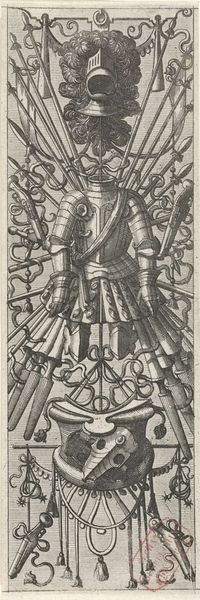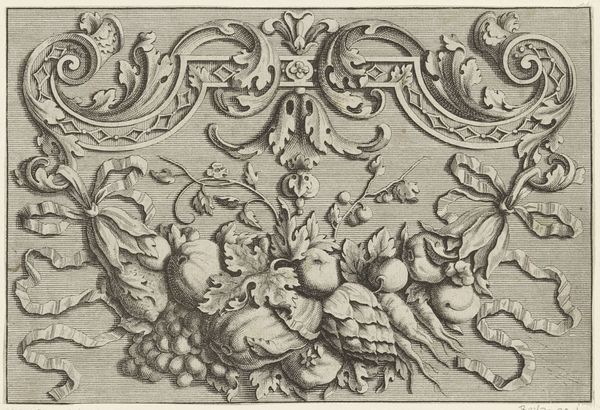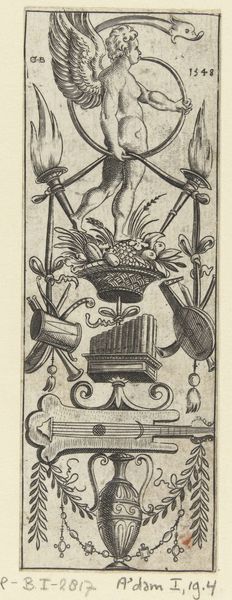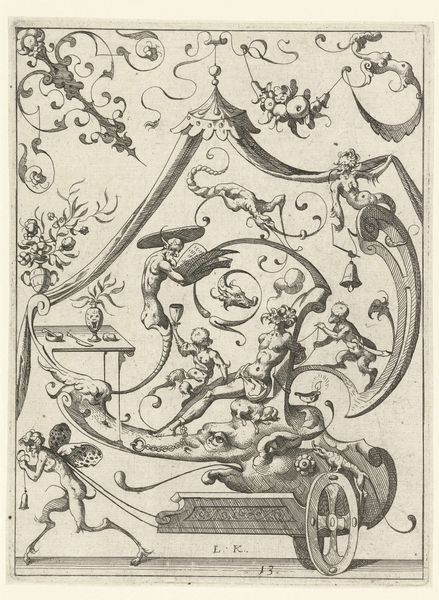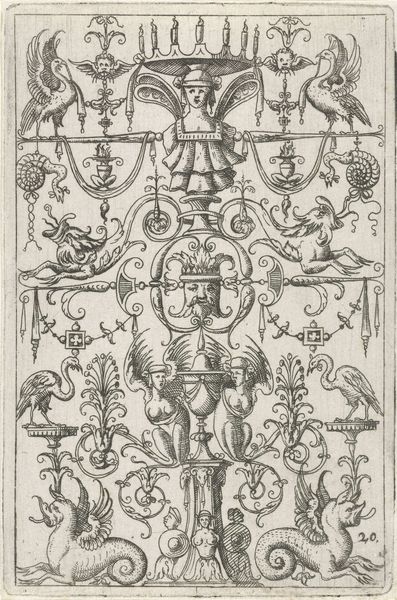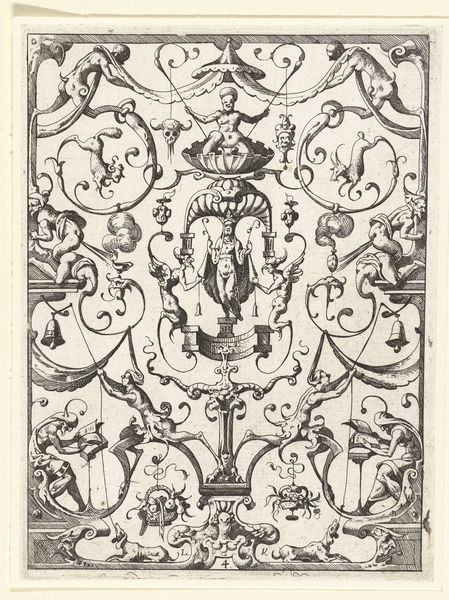
graphic-art, print, engraving
#
graphic-art
#
pen drawing
# print
#
form
#
11_renaissance
#
pen-ink sketch
#
line
#
history-painting
#
northern-renaissance
#
engraving
Dimensions: height 184 mm, width 62 mm
Copyright: Rijks Museum: Open Domain
Curator: Welcome. Before us is a striking engraving from 1572 titled "Wapentrofee met spaanse broek," which translates to "Trophy of Arms with Spanish Breeches." It’s attributed to Johannes or Lucas van Doetechum, and it resides here at the Rijksmuseum. Editor: It feels very...stark. Almost intimidating. All those weapons arranged so deliberately. It evokes a sense of martial power, but the inclusion of the breeches adds an odd, almost humorous note. Curator: Exactly. These "trophies of arms" were popular during this period, often displayed after military victories. They served not just as records but as visual propaganda. The arrangement, the weaponry, they're all very deliberate choices. Editor: The breeches though, they throw the whole image into a different light. Whose breeches are these? A fallen enemy? Or a symbol of subjugation? The details surrounding the object hold significance as they could refer to class, status or even cultural identity. Curator: That's precisely the type of questioning this imagery invites. The 16th century was a period of great upheaval in Europe, rife with religious and political conflicts. Spain was a dominant power. Consider the Revolt of the Netherlands that began in the late 1560s, just a few years before this print was created. Editor: So, these breeches might be a pointed jab at the Spanish? A sort of symbolic disrobing, rendering them vulnerable? It's interesting how this artwork blends both reverence for military strength with what could be a subtle act of defiance. Are they "trophies" or "spoils?" Or both, cleverly intertwined? Curator: It certainly prompts a reassessment of what "victory" truly signifies and how these images were used to cultivate certain narratives about power and authority. We see that the role of artists, such as the Doetechums, can contribute, intentionally or unintentionally, to propaganda, and how we as viewers can decode these constructed images to see deeper meanings. Editor: I see how considering that historical context and questioning the symbolism lets you perceive those layers in the artwork. Thanks, this has certainly been quite revealing, providing insight to understanding the era's sociopolitical atmosphere! Curator: My pleasure. It’s precisely this ongoing dialogue with the artwork that enriches our understanding of both its time and our own.
Comments
No comments
Be the first to comment and join the conversation on the ultimate creative platform.


